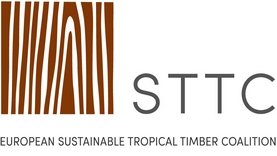Seismic shifts in hardwood consumption
Consumption and trade patterns in the global hardwood market are undergoing significant shifts, according to keynote speakers at the 2017 International Hardwood Conference. The event, held in Venice in November, drew an international audience of 150, with presentations delivered by a panel of experts from around the world addressing everything from regional trade developments to branding legal and sustainable tropical timber.
Analyst Rupert Oliver of Forest Industries Intelligence said that global hardwood export and import statistics were in balance in 2017 at US$35 billion, underlining ongoing lack of market value growth in the sector. However, underlying this was a significant shift in consumption, with the key trend being China’s soaring consumption. In 2016 its hardwood log imports (temperate and tropical) rose to 15.4 million tonnes, 1.1 million more than in 2015. At the same time its hardwood lumber imports were up 12.5% at 9 million tonnes.
Researcher Davide Pettenella of Padua University reported on an interesting study, asking whether market legality controls were creating a dual market for primary tropical timber products. This compared trade trends in EU states, the USA and Australia, representing developed countries with strict timber market legality regulation, and China, Vietnam and India, representing emerging consumers with lighter controls. This highlighted import swings towards the latter. In 2001 of all tropical timber imported by these countries, the developed economies accounted for 63% and 72% by volume and value, the emerging countries 37% and 28%. Today the respective division is 44% and 47% and 56% and 53%.
However, while legality controls may be implicated in this trend, Mr Pettenella cautioned against assuming direct cause and effect. He said increasing intra-regional trading growth was as, if not more significant. “It’s a phenomenon which should concern policy makers,” said Mr Pettenella. “In 1990, there were just 20 intra-regional trade agreements. Today there are 283.”
This development, said analyst Pierre Desclos, would be reinforced by population growth. Citing Africa as an example, he said the continent, which has 15% of the world’s forests, would account for a third of global population by the end of the century. Consequently it would consume a growing proportion of its own timber within the African region, leaving less for export. This would necessitate the global trade focusing increasingly on supply, yield and logistics.
Delegates also heard from the International Tropical Timber Technical Association (ATIBT) about its new branding initiative for legal and sustainable tropical timber, Fair & Precious. This, explained the organisation’s Managing Director Benoît Jobbé-Duval, was designed to enable the sustainable tropical timber trade to take back control of messaging and agenda setting in its sector and the wider marketplace.
Marketing Programme Coordinator Christine Le Paire explained that companies along the supply chain could use Fair & Precious branding in their own publicity, provided they supplied and traded in verified sustainably and legally sourced tropical timber. “It is effectively an umbrella brand covering all credible sustainable certification and verification schemes, such as FSC, PEFC and PAFC in Africa,” she said. “Overall the Fair & Precious message is that a viable sustainable tropical timber sector has environmental, social and economic benefits.”




